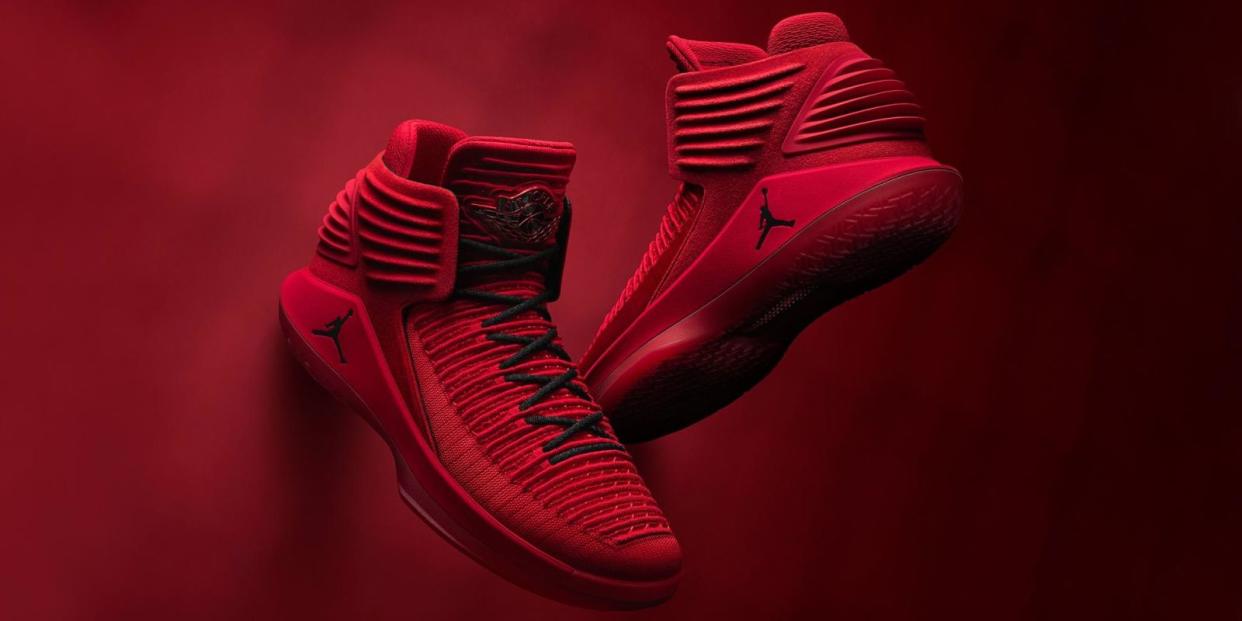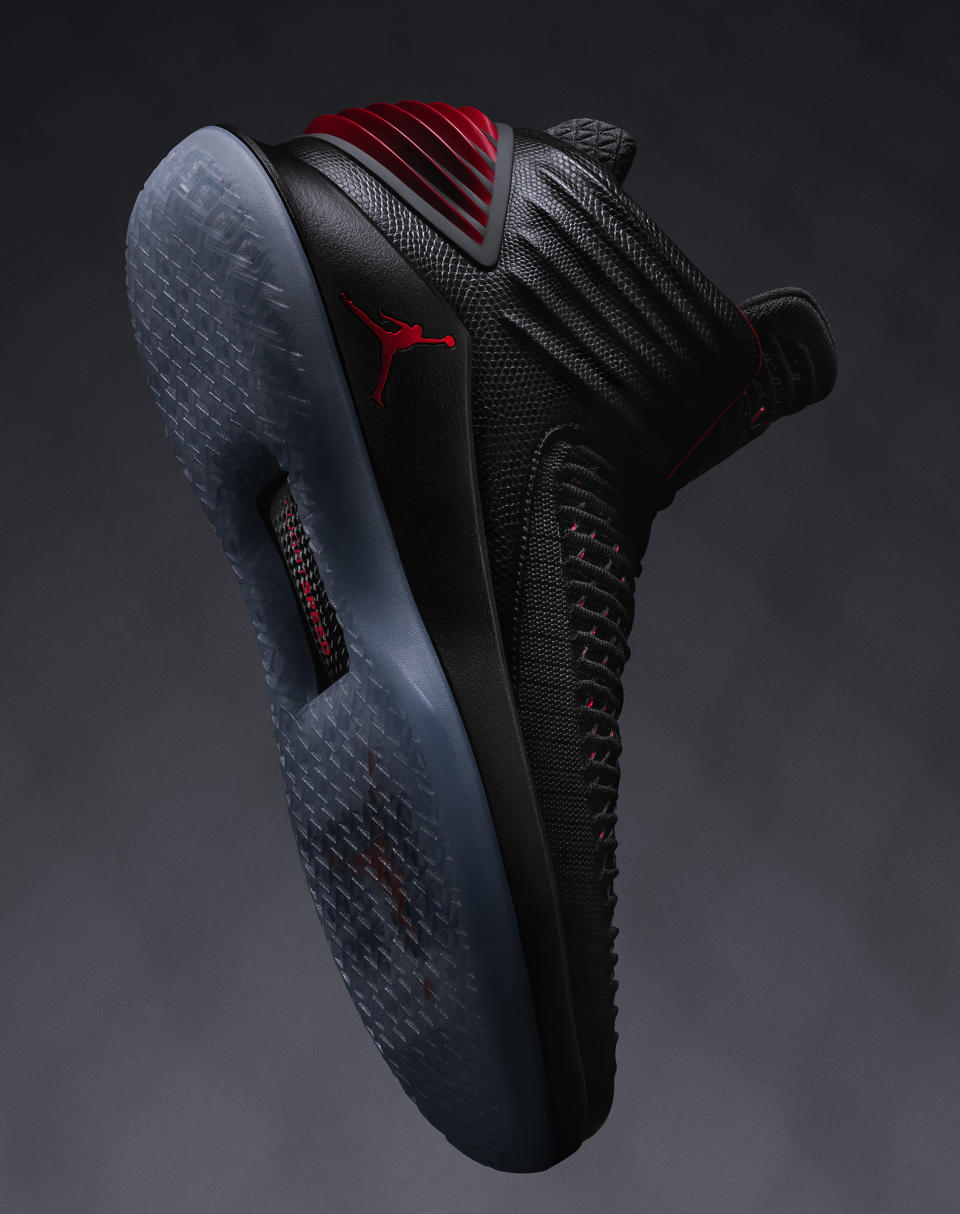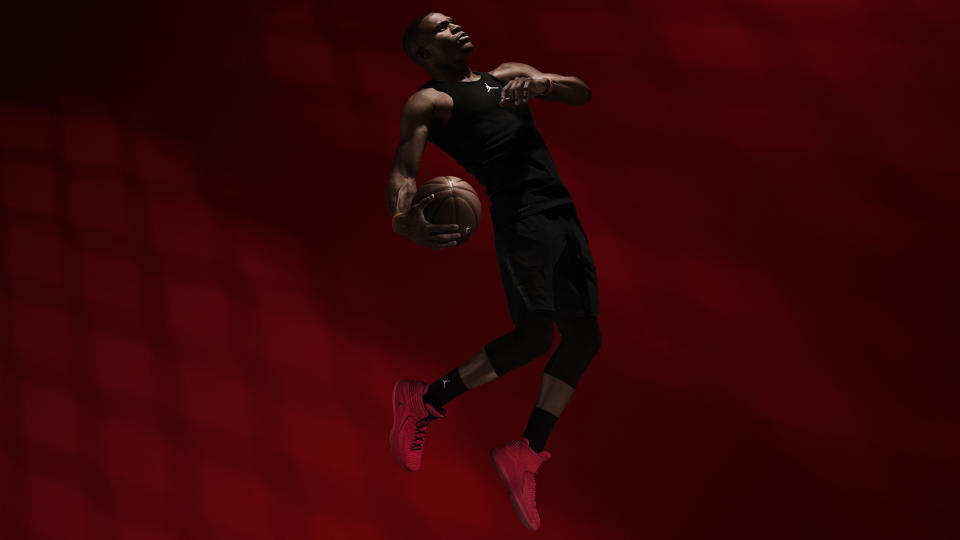Here's Your First Look at the New Air Jordan 32

Michael Jordan loves Italian sports cars. He can't get enough of them. He has a massive collection and it's always growing. Tate Kuerbis, senior footwear designer at Jordan Brand and lead on the Game Shoe program, visits Jordan at his house whenever he gets the chance. "I get to go there and meet with [Jordan] and one of the things that I love to do is go out to his garage and see his latest and greatest," Kuerbis says. "It seems like he buys a new Ferrari every year."
Jordan's obsession with these cars come from their mastery of three distinct elements: speed, design, and craftsmanship. Those are the three tenants that every incredible car is built on, and it's where Kuerbis started when it came time to design the latest game shoe: The Jordan XXXII. Last year marked almost a reset for the brand and its line of game shoes, creating the 31 in the image of the Jordan 1, the first Air Jordan sneaker ever. This year follows that line, drawing a direct comparison from the Jordan II to the XXXII, but it's more than just the way it looks. It's in every stitch of the shoe.

Being around all those expensive cars in Michael Jordan's garage might serve as the perfect inspiration for design-but it's not without its risks. "He handed me the keys like 'You could get in this car and drive it,' and I was kind of worried I was going to pull a Ferris Bueller and put it in reverse and go out of his garage into his pool," says Kuerbis. Instead, he just sat in it. But even sitting in with was enough. Kuerbis absorbed the craftsmanship, the smell of the leather, the feeling of speed that wrapped around him. He knew he had to bring those elements into a new sneaker.
When it first appeared, the Jordan 1 represented a new paradigm for the sneaker and basketball industries. Not only was the shoe tailored to every need Jordan expressed, it was a totally new look for the NBA and the players. When it came time for the follow-up, the Jordan II, Michael Jordan, Jordan Brand, and designers Peter Moore and Bruce Kilgore decided to shoot off in a totally new direction. Nike and Jordan's whole ethos was about always doing the next new thing, not stagnating in tropes that proved successful. So they took the sneaker program to Italy, inspired by Italian craftsmanship and quality, to create a luxury shoe that worked as well as any other sneaker on the court. It would be a better shoe from sole to tongue. And it worked. Thirty years later, the new XXXII was born from that same idea.
"When we draw from our heritage is when we win."
"When we draw from our heritage is when we win," explains David Creech, Vice President of Design at Jordan Brand. "There was a reason they built the Jordan II in Italy and we're taking some of the ethos from that."
At first glance, the Jordan XXXII shares a lot with the II. That's thanks to what Kuerbis calls a design "gesture." It's the combination of elements on the sneaker that create movement and lines, almost like a piece of static choreography implied by tangible design. "If you look back at some of the best game shoes, you should be able to close your eye and still see the shoe," he explains.
You might not know all the names of the shoes, but the bold design gestures set them apart. The 11 has that broad patent leather mudguard, the 13 has unique quilting, the 5's eyestays reach off the shoe. "There are just certain types of gestures that stick with you. They're simple, they're not too busy, but the gesture on this one was really capturing that kind of speed and how it all fits together, and it became this movement, this flow into the back part of the shoe." It's not enough to make a shoe that looks good and performs well, it has to be more. It has to reach further, fly higher, and speak to the world clearly. "When you design a Game Shoe it's got to be different, it's got to be unique, it's got to stand the test of time. You've got to be able to look at it from a distance and say: That's a Game Shoe," Kuerbis says.
The gesture on the II, like that in the XXXII, is all about speed. It always comes back to the speed for Jordan. "Michael's always talking to us about, 'I want a shoe that looks fast,'" Kuerbis says. So Kuerbis must deliver. The speed on the shoe is clear-but what's not clear is the technology that makes it fast. Kuerbis and his team did everything they could to hide the technology inside the sneaker. They covered the entire shoe with Flyknit-a first for Jordan Brand. Although Flyknit has been around since 2012, Kuerbis and his team reimagined it for this shoe. They transformed it into a dynamic, three-dimensional woven product made from multiple yarns, and designed to offer its own sculptural elements. It's so different from the way Flyknit has been used in the past that they've given it an entirely new name: FlightKnit.
"[Flyknit] was something that had been used a lot on the Nike side, but we felt like Jordan could do it in a way that's new and different and done in a way that felt very unique to us," says Kuerbis. "I spent hours and hours with my programmer exploring different Flyknit laydowns before we even made this. We were just creating swatches and swatches, and I would bring those back and share them with the design team and they just felt very elevated, very unique to Jordan."
This new, dynamic execution of FlightKnit makes for an upper that has more options than traditional Flyknit. Kuerbis had more control over flex, stretch, and strength, placing each needed element where he needed it to be while he designed it with his engineer pixel by pixel. That makes for an upper that's dynamic enough that it can stand on its own and be used as a way to hide away the technology that lives underneath it and makes the shoe what it is. "I wanted to have the technology embedded on the inside," explains Kuerbis. "On the inside, there's a whole system with support that you lace into, it was something that I wanted the player to know that they're locked down but not necessarily see."

The new shoe made for some long days, late nights, and a lot of redos. "It takes a lot of time, a lot of hours, it's a new way of thinking for me as a designer, it was an amazing process but I literally pulled my hair out most of the time," he says. (Point of personal privilege: He still has all his hair, but it's gone a little gray.)
Under all of that technology is a hefty sole that-and the power of the sole is hidden inside. Air-filled Zoom bags sit at the toe and heel, connected by FlightSpeed, a carbon fiber shank. Together, these three elements add bounce, spring, and cushion, placed specifically to maximize their benefits. And the hidden secret of the sole is how it touches the ground. The deceptively simple footprint of the sneaker not only hides a version of "XXXII" inside it, it's also one of the highest traction sneakers you'll find. From behind, the sneaker's sole looks like a bike tire, spread at the heel. That wide contact and the outsole's texture mean you'll never slip, no matter where you play. Even those tinny little hills and valleys on the sole of the sneaker were the subject of a battery of tests to ensure they're exactly what you need on the court.
"There is a true science; there have been so many studies at Nike in the Innovation Lab with the height versus the width, and I take a lot of that very seriously," says Kuerbis. "There's an art to it too because you want it to look good. You want it to tell a story, but we really do break down the science of how this is going to wear, how is this going to perform, how is this going to grip on the court?" Details like this are all over the shoe, whether it's the six ribs at the throat for Jordan's six rings, a practical spoiler on the heel that's also a riff on the AJ2, the woven tongue labels unique to each colorway, or the fact that there's only one visible seam on each side of the sneaker.
Every Game Shoe begins with a conversation with Michael Jordan, only to go through thousands of sketches, tech packs, material explorations, testing, and so much more. What Jordan wants is crucial but ultimately the team takes much more than each initial meeting with the man.
"We've taken the essentials of what he does on the court, the style and flare of that, and also the style that he has off the court, and created a direction around this idea of the Art of Flight," says Creech. They use everything they know about him and put it into every element of the sneakers.
Any time you set out to design a shoe for an athlete, the goal is to reflect the athlete and the game they played. With Jordan, it's about designing for the best to ever do it.
You Might Also Like

